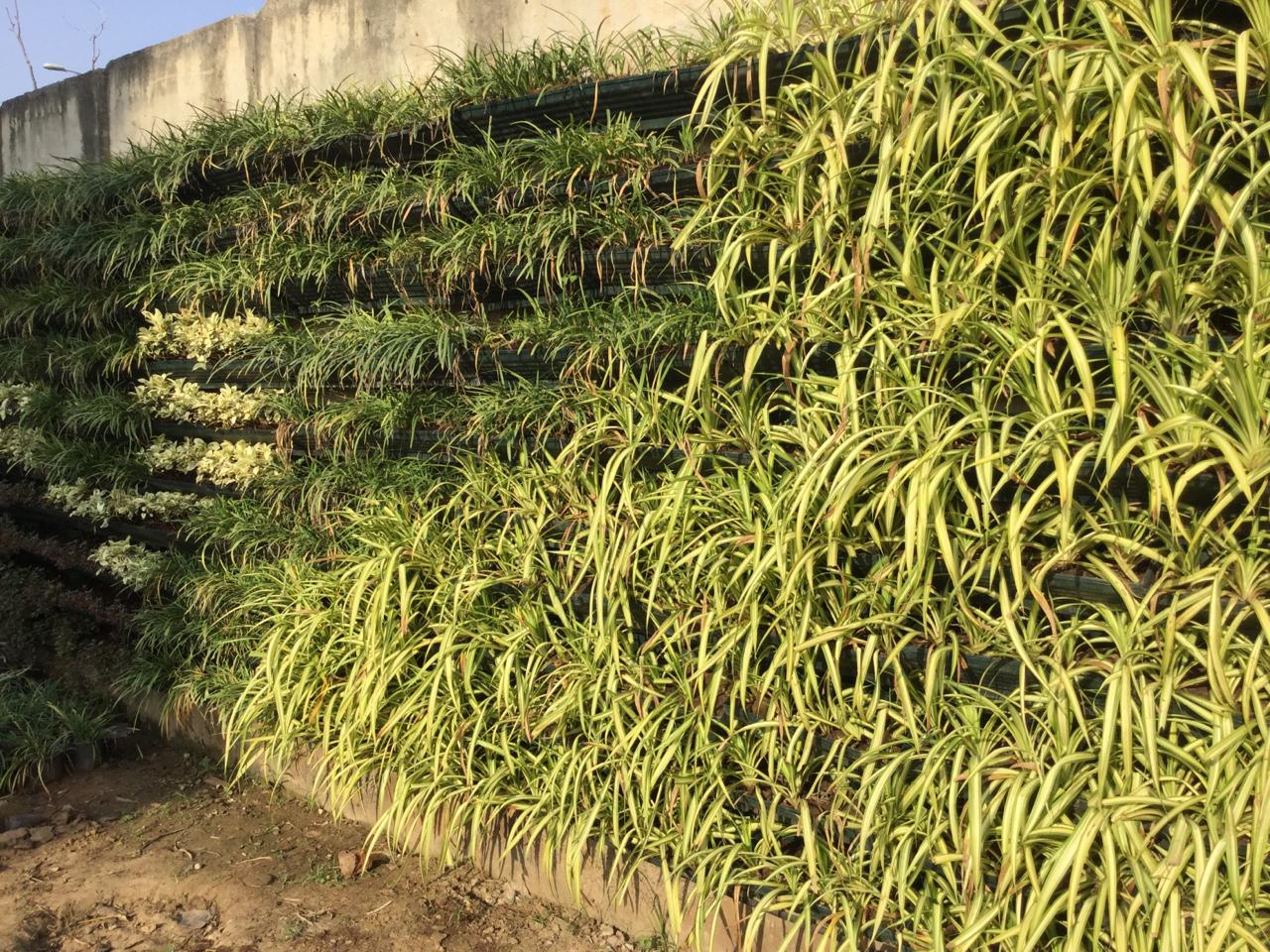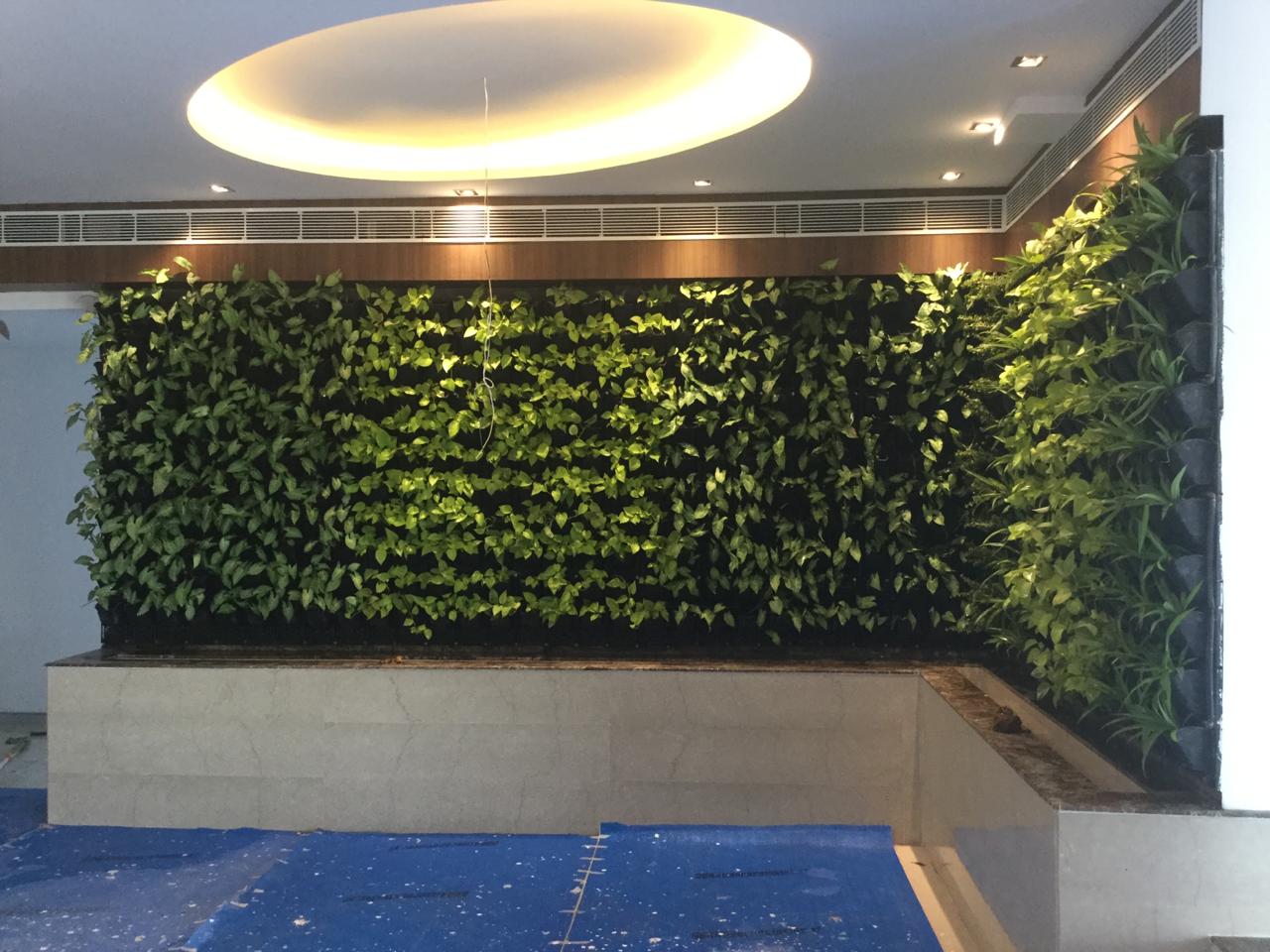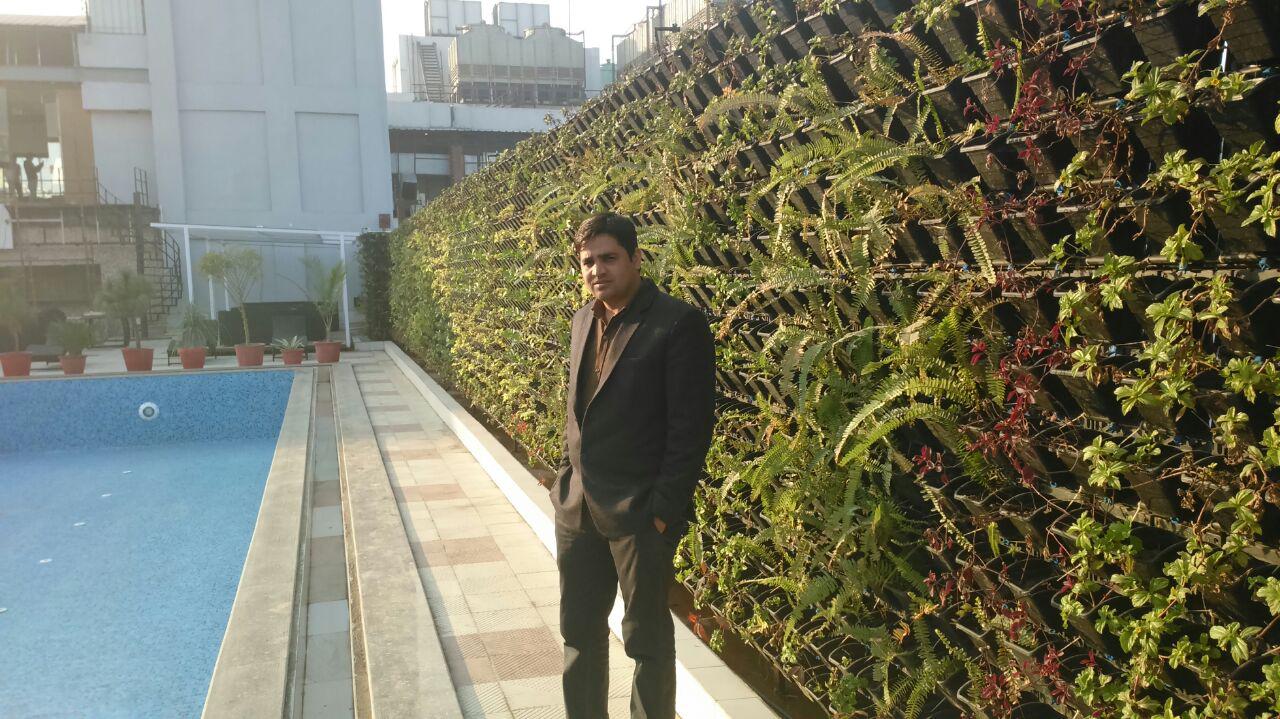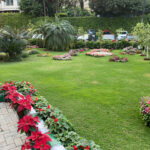Nowadays, with living quarters so small, breathing spaces so limited, and pollution all around, it seems unfeasible to consider having a home garden. That isn’t the case, though. Anyone can enjoy the satisfaction of cultivating and gathering their own food, as well as the increased nutrition and self-sufficiency that comes with having their own private green area. It’s only a matter of optimizing the available space. Invented in 1938, by University of Illinois Professor Stanley Hart White, the Vegetation-bearing Architectonic Structure and System is a novel idea. Is what is referred to as the “Vertical Garden” nowadays. However, French botanist Patrick Blanc deserves the most recognition for popularizing and modernizing the idea. He built green walls in.
What is vertical garden?
It is a creative and incredibly fruitful growth system that works with both top-down and bottom-up supports for a broad range of plants in small and large garden areas. Plants are grown vertically and upward, making the best use of the available area. A green wall, often known as a vertical garden, can be affixed to a building’s façade or inside. The way the plants are rooted in a structural structure that is attached to the wall itself sets it apart from a green façade. Rather than from the earth, they get their water and nutrients from the vertical support.

Vertical gardening advantages
Numerous aesthetic, financial, physiological, and environmental advantages are offered by vertical gardens. You may make the most of your limited space—especially in crowded urban areas—by creating a vertical garden.
- Food security: Growing food vertically is a great way to cultivate it in spaces that are tight on space. The many vertical garden technologies offer efficient, straightforward, and sustainable ways to grow fruits, vegetables, and herbs, improving food security for populations living in urban areas and facing a shortage of agricultural space.
- Enhancement of air quality: By eliminating dangerous VOCs (volatile organic compounds) and absorbing pollutants, vertical gardens enhance the quality of the air both inside and outside. Growing plants vertically improves the quality of the air you breathe, especially in small areas like windowsills, balconies, front doors, and so on.
- Thermal insulation: Because green walls insulate buildings, less energy is needed to heat or cool them. You may conserve electricity by keeping a building warm in the winter and cool in the summer thanks to a vertical garden.
- Benefits in terms of aesthetics: Vertical gardens let you make the most of your limited space and recover underutilized area. Unused space can become visually appealing and intellectually stimulating eye candy with the addition of a green wall.
Success factors for vertical gardening
There are several basic gardening concepts that apply when selecting plants for your vertical garden. To ensure the greatest possibility of success, adhere to the same guidelines as with an in-ground garden.
- Proper plant, proper location: Not every plant, whether you cultivate in-ground or vertically, is appropriate for your environment, even though the plants on the above list thrive in a variety of climates. Select plants that are suitable for the climate and container. “Right plant, right place”
- Size: Be aware of how big your plant will get before making a purchase. Standard-sized pots or pocket-sized felt planters are ideal for basil and other herbs, as well as small annual flowers. When perennials outgrow their container, divide them.Although many will grow in a smaller pot, most plants like at least eight inches. Generally speaking, though, it is wise to err on the side of greater. See Cornell Cooperative Extension of Chemung County’s helpful chart for information on individual plants and the ideal container size.
- Drainage: Drainage is a need for all containers. These can be holes in the edges of the pot just above the bottom or on the bottom of the pot itself.To improve drainage, NEVER add stones or gravel to the pot’s bottom. As a result, the soil’s capacity to effectively drain from the container is actually reduced.
- Color: Dark-colored pots will absorb heat, raise the soil’s temperature, and hasten the drying out of the soil if your vertical garden receives full, intense sun during the summer. But a dark pot can be useful in the cold.
- Composition: What kind of material is used to make your pot? The most porous and water-losing materials are earthen materials, such as clay, terra cotta, and unglazed ceramics. Because they are not porous, glazed pots, metal, plastic, and fiberglass lose the least amount of water. Pots made of wood and fiber are in the middle and are semi-porous.Succulents and cacti thrive in porous pots. Most other plants can be planted in non-porous pots, which will allow them to retain more water and use less water overall.
Lastly, in regions with frigid winters, the majority of unglazed earthenware is not appropriate for year-round use. Water that is absorbed by these pots expands and eventually causes cracks in the pots.
- Weight: Generally speaking, a larger plant calls for a heavier container. Think about how the wind may effect your less substantial pots and whether it affects the balcony as a whole.Double potting is one trick (you put, say, a lighter plastic pot within a larger, heavier one). To prevent excessive movement of the inner pot, place mulch or foam in between. Although this technique is most commonly employed to stop moisture loss, it can also be utilized to give lighter plants more weight.
Think about the weight capacity of your construction as well. It is not advisable to add more soil and pot weight to your building than what would keep it solid and secure.
- Water-efficiency: Put plants that require similar amounts of water together, whether you water them by hand or with drip irrigation. Once it’s time to water everything, stop till the next time.

CONCLUSION
If you’re looking for a knowledgeable and reliable landscape business to improve the appearance and value of your residential property, look no further than us. We offer the following residential landscaping services, Design and installation of hardscapes, lighting, irrigation systems, plants, trees, and flowers, among other landscape features.
Upkeep involves attention to an established landscape, encompassing tasks like mulching, weeding, fertilizing, and mowing.
Indoor and outdoor vertical gardening is a useful, imaginative, and sustainable hobby. It is eco-friendly due to the use of recycled plastic planters and the numerous advantages offered by the plants. Begin constructing your vertical garden right now, and see how your room transforms.







